Term archive
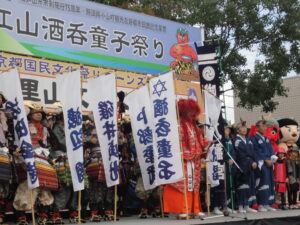
投稿タイプ:events
Shutendoji Demon Festival
Held on Mt. Oe, which is famous for the legend of Shutendoji, said to be Japan's strongest demon, this festival includs a number of events, including a parade of samurai, including Minamoto-no-Yorimitsu, to drive away demons, as well as the "Mt. Oe Demon Test," and more.
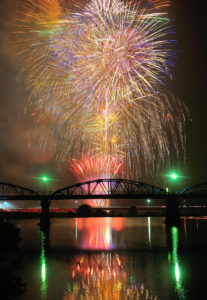
投稿タイプ:events
Ayabe Minatsuki Festival
It is said that this festival began with a tradition of sending lanterns floating down the river as a memorial service for the ancestors of the locals, and now it is this summer festival that lights up the summer in central Kyoto. Approximately 10,000 colorful lanterns are floated down the Yura River, and fireworks are subsequently launched from around the middle of the river. This area has a basin-like terrain, and the sound of the launches echo throughout the city—sometimes as far as to Maizuru City in the north. This summer festival gives the city of Tamba the nickname, "city of falling stars."
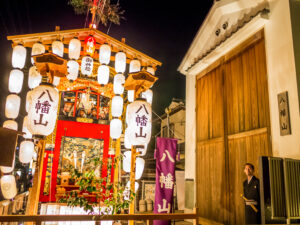
投稿タイプ:events
Kameoka Festival
Kameoka Festival is the local shrine's annual festival, held in Kameoka City, Kyoto Prefecture each year in October.
During the three-day "Yamahoko (float) Event" held from October 23rd to 25th, traditional, resplendently decorated "Hikiyama" and "Tateyama" floats will light up the old castle town. The festival is also known as Tanba's (Kuchitanba's) Gion Festival, or Kameoka's Autumn Festival.
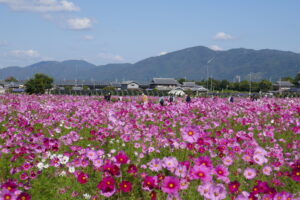
投稿タイプ:events
Yume Cosmos Garden
Yume Cosmos Garden is a cosmos flower garden opened for a limited time only in Kameoka City, Kyoto Prefecture. There are about 8 million colorful cosmos in the park, which are sure to soothe the eyes of the viewer.
There are early-blooming varieties as well, so you can enjoy the blooms even at the beginning of the season. In addition to the typical "sensation" variety of cosmos, you'll also find rare varieties such as "Yellow Campus," "Happy Ring," "Double Click," and "Psychedelic," and the more you walk, the more you will discover.
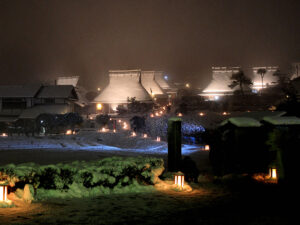
投稿タイプ:events
Snow Lantern Festival in Miyama’s Thatched Village
Snow lanterns, flower-patterened lanterns and more are lit during this event, lighting up the night here in the Kayabuki no Sato village of traditional thatched houses.
During this event, visitors are invited to enjoy the beautiful sight of the thatched houses here in the village, covered in snow and lit up. You can of course enjoy the lovely scenery, but visitors can also partake in the event by using their creativity to create their own snow lanterns, and line them up at the venue.
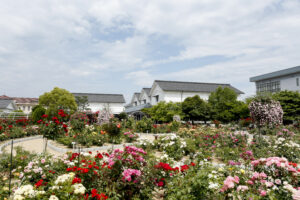
投稿タイプ:sightseeing
Ayabe Gunze Square
Ayabe Gunze Square consists of three facilities, Ayabe Specialty Store, Gunze Museums, and Ayabe Rose Garden. People who visit Ayabe's Gunze Square will have plenty to do, from touring the flower garden, to visiting the museums dedicated to Ayabe's role in Japanese history. There is also a specialty goods shop selling Ayabe products, as well as an area to get tourist information and a café. The square is expansive and a great place to relax. It is also within walking distance to a lot of Ayabe's downtown sites, including the train station.
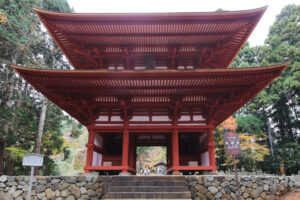
投稿タイプ:sightseeing
Niomon Gate and Komyo-ji Temple
You'll find Komyo-ji Temple on a mountain slope in the forests of Ayabe City. It was said to have been founded by the legendary Prince Shotoku (572-622). The temple's main Niomon Gate was constructed in 1248 and was designated as a National Treasure in 1954. The gate has a gabled roof with rare shingles that aren't commonly found in Japan.
The temple and gate are along walking trails just up the road from Ayabe Onsen. These trails lead to a great horse chestnut tree, which is estimated to be nearly 2,000 years old.
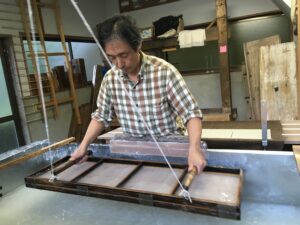
投稿タイプ:sightseeing
Kurotani District
Kurotani washi paper is a tradition that has been protected for 800 years, and is also designated an Intangible Cultural Property by Kyoto Prefecture.
At the Kurotani Washi Paper Hall, in addition to washi paper crafts for sale, you'll find papermaking activities (reservations required), and you can also tour the workship and exhibition room.
The Maple Leaf Festival is held with great pomp every November.
Kurotani is a nature-filled area—with the babbling of the Kurotani-gawa River, the singing of frogs, and the colorful carpet made by the gingko and maples in the fall—that's certainly worth visiting once.
You can also purchase washi paper crafts, tour workshops, and try your hand at papermaking at the Kurotani Washi Paper Crafts Hall (Tel: 0773-45-1056), which is only open on weekends in the Kanbayashi area.
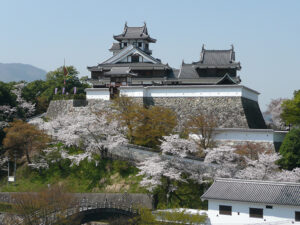
投稿タイプ:sightseeing
Fukuchiyama Castle
Before Fukuchiyama Castle, there was Yokoyama Castle, a fortress of the Yokoyama, the local ruling family. Akechi Mitsuhide, the samurai who subjugated Tamba, rebuilt the fortress using state-of-the-art castle-building techniques of the time, and renamed it Fukuchiyama Castle. There used to be many structures here, including a three-layered four-storied castle tower and expansive Ninomaru Palace. However, these were taken down one after another, following the abolition of feudal domains in 1871. All that remained was a stone wall between the raised foundation and castle keep, a well called Toyoiwa-no-I, and a guard station. The castle currently standing was reconstructed over a period of three years, and construction was completed 1986. The interior is used as the Fukuchiyama City Folk Museum. The castle park also contains the Fukuchiyama Sato Taisei Memorial Art Museum. Exhibits there are centered on works by the late Sato Taisei, a master of Japanese-style painting.
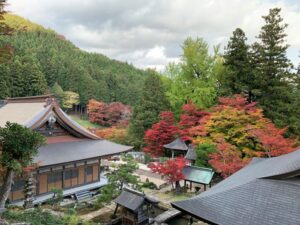
投稿タイプ:sightseeing
Choan-ji Temple
Choan-ji Temple is said to have been founded in accordance with the imperial command of Prince Maroko, a brother of the legendary Prince Shotoku. With its rich natural environment and a dry landscape garden, Choan-ji Temple is a very popular Buddhist holy site, but it is also open to the public for recreation and entertainment. Inside the Yakushi-do Hall, you'll find a great majestic dragon carved into the ceiling by a carver famous in the Tanba and Tango area. There is also a park located inside the temple grounds, Choan-ji Temple Park, which is operated by Fukuchiyama City. The 500 maple trees growing on the Choan-ji Temple grounds have earned it the title "Tamba Province's Autumn Foliage Temple," and in mid-November it boasts spectacular autumn shades of red, green, and yellow. Choan-ji Temple is also a popular spot for foreign couples to take Japanese-style wedding photos.
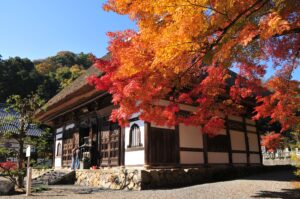
投稿タイプ:sightseeing
Ankoku-ji Temple
Ankoku-ji Temple was founded in the mid-14th century by order of Ashikaga Takauji, the founder and first shogun of the Muromachi shogunate. Thought to be born in the area, Ashikaga Takauji's grave is located on the temple grounds, with his mother and wife by his side (these gravescan be found to the right-hand side of the temple, past the pond area). Ashikaga Takauji's mother, Uesugi Kiyoko, prayed to the bodhisattva of childbirth at Ankoku-ji Temple, wishing to bear a baby boy, and today is it still popular amongst those praying for safe childbirth. This historic Buddhist temple owns a substantial number of nationally designated Important Cultural Properties (such as the Seated Shaka Buddha Triad), which are displayed at the main hall. These properties include Ayabe City's important cultural heritages, which are valuable symbols of the city's history. The temple's main hall is a thatched roof building (very uncommon for a temple) surrounded by cascading maple trees. The bright green moss covering the thatched roof contrasts beautifully with the red, orange, and yellow autumn foliage within the grounds, making the temple seem like something out of a fairytale.
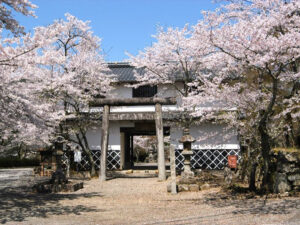
投稿タイプ:sightseeing
Yamaga Castle Park
Yamaga Castle Park in Ayabe City, Kyoto Prefecture, is one of the "200 Best Nature Spots in Kyoto" because you can enjoy the nature of the park year round, with plums and cherry blossoms in spring, fresh greenery in summer, and autumn leaves in autumn. The park holds the "Sakura Festival" on Sundays in early April every year, where you can hear Yamaga drums being played, buy local specialties, and try to catch fresh rice cakes or "mochi" in the "mochimaki" ritual where mochi is tossed out over the gathered crowd. In addition, the autumn leaves are beautiful in mid-November adding color to the garden and the restored castle gate.
The park is not only a great place to enjoy nature, but to learn about history. Yamaga Castle was the home of the Waku family, a great family during the Edo period but it was attacked by Akechi Mitsuhide. After the castle fell, a camp was set up by Moritomo Tani, who was ordered by Hideyoshi Toyotomi to be the lord of the Yamaga domain. The site of the camp is now maintained as a park and the second floor of the restored castle gate holds a Yamaga Museum and has materials related to the Tani Clan including armor and ancient documents. What’s more, on the north side of the park are the remains of the castle moat.
